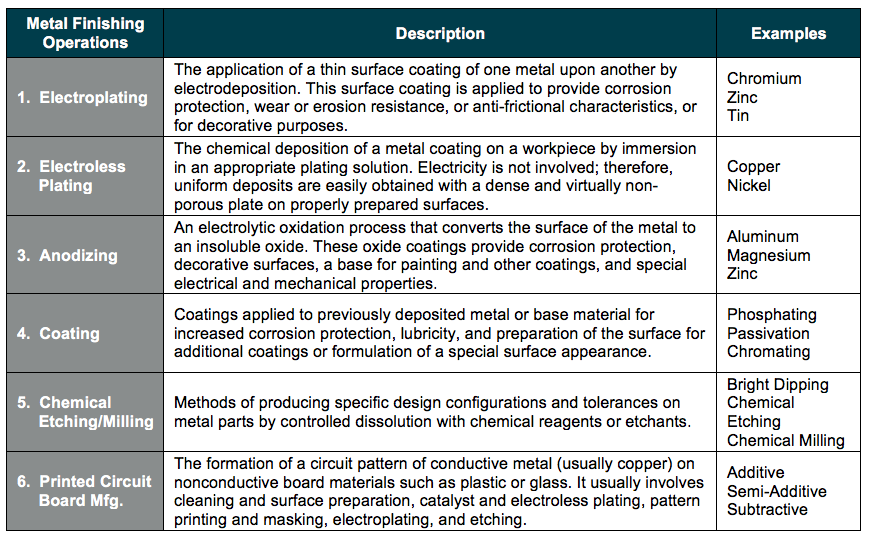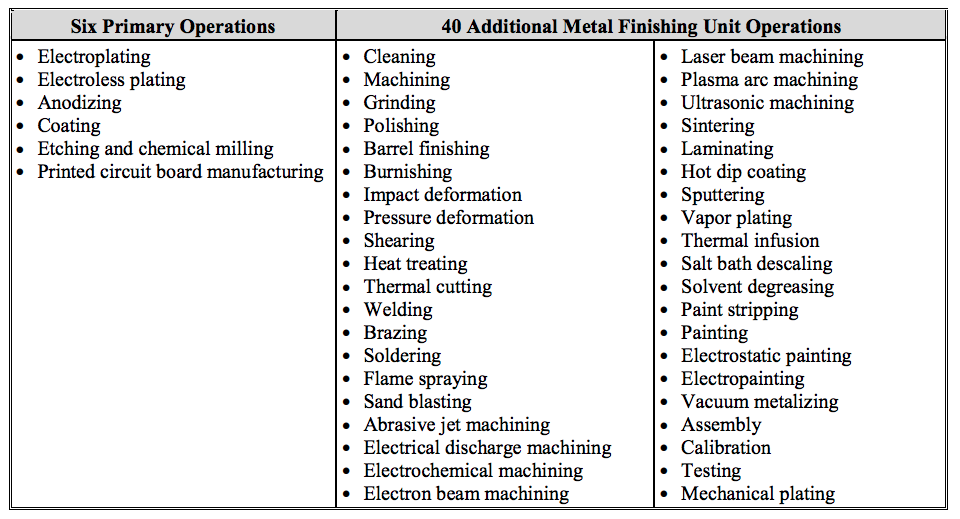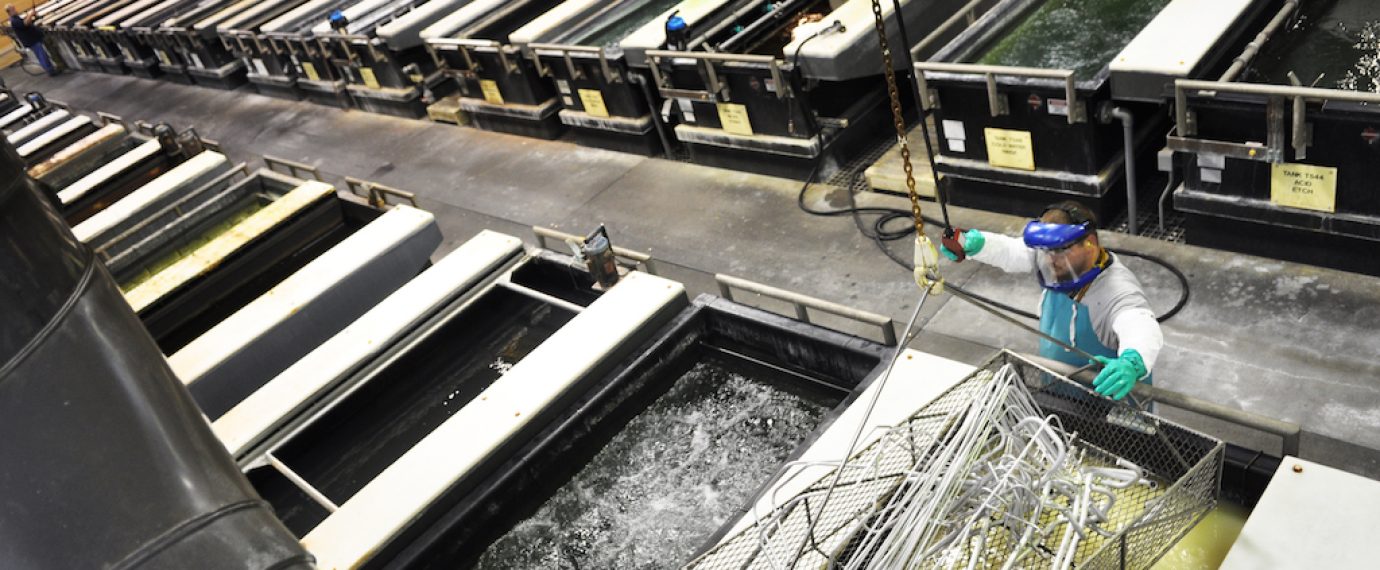Under the Clean Water Act, the EPA put the Metal Finishing Categorical Pretreatment Standards into effect on July 15, 1983, as 40 CFR Part 433. The regulations cover wastewater discharges from a wide variety of industries performing various metal finishing operations. More specifically, the metal finishing operations applicable to the standard mostly involve the process of changing the surface of a metal object to improve its appearance and/or durability. Applicability of the Metal Finishing Category is defined by the type of process operation versus the industry sector.
The primary goal of the standard is to prevent the uncontrolled discharges of wastewater pollutants from industrial facilities with metal finishing operations. To accomplish this, limitations on the pollutants are implemented within the standards. These limits also prevent the discharge of pollutants that could pass through, interfere with, or otherwise be incompatible with the local wastewater treatment plant that receives the wastewaters.
DOES YOUR FACILITY HAVE METAL FINISHING OPERATIONS APPLICABLE TO 40 CFR 433?
The Metal Finishing Standard regulates wastewaters generated from six primary metal finishing operations. The primary six operations are outlined below.

If a facility conducts any one of the six operations listed above, a Categorical Wastewater Permit is required. This applies even if the wastewaters generated from the process are sent out for disposal as a hazardous or non-hazardous waste (versus discharging to the sanitary sewer). Often termed zero discharge, a facility with no discharge to wastewater can still need a permit if they meet the categorical requirement.
ADDITIONAL PROCESS WASTEWATERS REGULATED
If a facility conducts one of the primary metal finishing operations and is applicable for permitting, then the standard also covers additional wastewaters resulting from an additional 40 metal finishing operations (that may or may not be present at the site). To comply with the metal finishing standard, it is the facility’s responsibility to identify the additional metal finishing wastewaters during the permitting process. The additional 40 operations are outlined below.

PRIMARY REQUIREMENTS
Once a facility has determined that a permit is required, the following actions need to be completed to achieve compliance with the EPA standard:
- Initial sampling and testing
- Baseline Monitoring Report (BMR)
- Permit application
- Developing and certifying a TOMP plan
- Routine monitoring and reporting
- Permit renewals
PITFALL – Applicability of EPA Categorical Standard Not Assessed
From my experience, many manufacturing facilities have not fully disclosed with the local permitting authorities whether a discharge permit is required for the discharge of their wastewaters. Equally, local wastewater authorities are not always reviewing categorical requirements. As a result, the applicability of the metal finishing standard has also never been assessed. Issues tend to arise when a new inspector or other permitting agencies (i.e. State or EPA) get involved.
CONCLUSION
If you find that your facility does conduct one of the primary six metal finishing operations, work with your local permitting authority to obtain the required discharge permit. This will ensure compliance with the Metal Finishing Standard while also eliminating the possibility of EPA enforcement.



